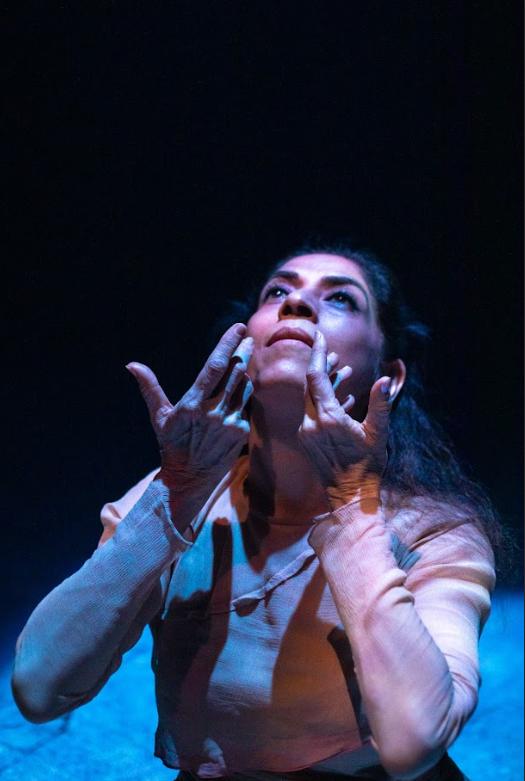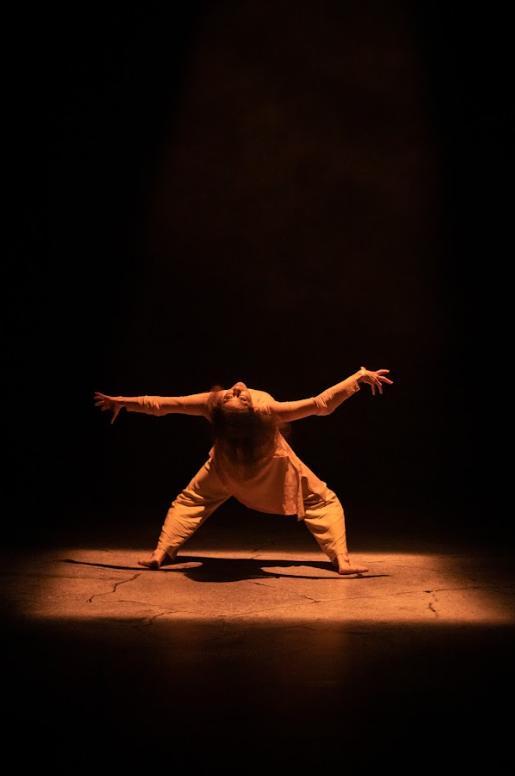Peeling the Layers…
Of female sexual desire… Leading Kathak exponent, Aditi Mangaldas talks about her bold and brave new work, Forbidden, and the story of how it came to be







Surely, the idea of Forbidden didn’t happen one day or one night or in a moment, right? But what was that final moment when you decided to distill the thoughts in your head and create a work out of it?
Most of my choreographies start off on an autobiographical note, hopefully, eventually opening out in a parabolic universal trajectory; it was the case with Forbidden too. The idea for any production of mine, whether classical or contemporary dance based on Kathak, has always brewed within me for months.
If you are open to the pulse of life, then a piece of music, poetry, literature, architecture, movement, nature in its intense beauty and fury, a beautiful painting or sculpture becomes the inspiration and the trigger point. A small seed germinates within your being.
For many years I was observing how female sexual desire was trapped in taboos and societal sanctions. Though I come from an extremely liberal family and have lived life mostly on my own terms, these societal taboos do creep in insidiously.
The question haunting me was, why is the world scared of female sexual desire? Why are women – the world over – from conservative as well as liberal societies, sanctioned, judged, controlled, hounded, shamed and eventually punished because they have the courage to own their desire? What is the root of this fear?
In its very title, Forbidden has a quality of the mysterious in it; something we must not; what was it like for you to explore or traverse into a zone like this? Did you find freedom in the process of this exploration?
As women, we grow up realising the taboos attached to female sexual desire – it’s a lived experience, no matter where we come from. As an artiste, I feel compelled to confront these taboos, to acknowledge female sexual pleasure and the ownership of it, which is forbidden.
Sexuality is a private affair but all the sanctions attached to it requires and demands taking a stand on the universal, public and personal front. It was not an easy subject, as I realised myself, how deep rooted this fear of female sexual desire was.
Quoting the mythologist and storyteller, Devdutt Pattanaik, “… fantasy frightens us, especially female fantasy… One way of regulating fantasy has been by propagating stories where women who pursue their desires are viewed as dangerous, hence need to be restrained for social good.”
The process of Forbidden, was like peeling an onion laboriously with every peel making me realise how entrenched this aspect of the forbidden is.
In contemporary dance and in the works that you create there is a dramaturg; what is the role of the dramaturg and why is this not yet a prerogative of the classical?
For me, as a classical dancer, the aspect of questioning myself has always been interwoven within the repertoire, constantly requiring me to be vigilant. The training, if honestly received, imparts the ability to question oneself fearlessly and critically. Thereby making one their own dramaturg.
However, I have not developed this sensitivity when applied to contemporary dance based on Kathak. The dramaturg, in this case Farooq Chaudhry, became the third eye, constantly questioning the intention of every aspect of the production. There is detailed introspection, to ensure honesty towards the work.
Female sexual desire is in itself a complex notion to navigate because so little is written or spoken about it for various reasons; what was it like to articulate this in movement? What were some of the challenges you negotiated along the way?
The biggest challenge was to confront my own walls, as a woman and as a classical Kathak dancer. The other challenge was transforming these emotions into movement. Forbidden is ferocious and innocent simultaneously. It became a huge challenge to maintain and communicate this duality throughout the piece without unnecessary verbal explanations.
I explored many movement vocabularies, slowly letting a tiny essence of them be absorbed within this Kathak being. Forbidden has been realised after months of internalisation, debate, troughs and peaks; as each collaborator offered nuance to the work, till I found myself immersed in it.
To create work like this also requires courage; would you like your personality to give your dance that courage or did dance give you the courage to become the person that you are?
For me, any production is a two-way process. I would like to be immersed in dance just as much as I would like dance to be immersed in me. Artists are driven to explore subjects that consume them. That drive is a possession which compels artists to face and share provocative and difficult issues. In doing so, their immersion in dance and the dance immersed within their beings is a must and that becomes the fulcrum of the courage that is required for pieces like Forbidden.
Lights also play a crucial role in the works that you create; what is the role of lights in this work?
I try to encourage the viewer to enter any of my works at multiple and diverse levels. I do not want to put a full stop but like to leave a comma, letting the viewer add their own narrative. For maximising this, all collaborative inputs including light design have a major role to play.
It has been a thirty-year dream of mine to work with the legendary light designer, Michael Hulls. Michael was actively involved, not only as a light designer but as a collaborator engaging in all aspects of the work. Only then can a homogenous light design emerge. The lights embody the duality of ferociousness and innocence – they tell a parallel and yet completely in sync narrative of Forbidden.
You also acknowledge your mentor here; what is the role of a mentor while creating works like these and why do even artistes like you, at your stature and experience, need mentors?
The dramaturg sees the full picture, like a wide lens absorbing the entire universe of the production. A mentor sees minute details like under a microscope. At times, these two ways of observation become osmotic and overlap. A mentor needs to know the dancer and her work intimately.
Morag has been a part of my dance journey for over two decades. She has known me closely and observed my journey as a woman and as an artiste. This enables an insight that would be difficult to match. At whatever stage an artiste is, she must always remain a student of dance.
FORBIDDEN was commissioned by Aditi Mangaldas Dance Company – The Drishtikon Dance Foundation; co-commissioned by Sadler’s Wells, London, National Centre For The Performing Arts, Mumbai and Esplanade – Theatres on the Bay, Singapore; and supported by Dance City, Newcastle and Rajika Puri









